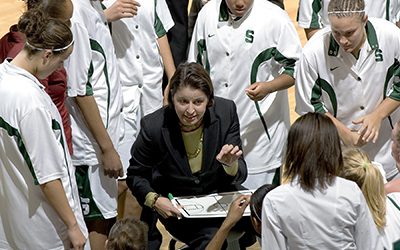Fifty years ago, an abstract clause tucked inside new education legislation changed women’s sports forever. How Title IX transformed life at Auburn and opened doors for women beyond the playing fields and courts
Winning a New Game: Joanne P. McCallie ’90
She was one of college basketball’s greatest coaches—but she was carrying a secret.
An Experiment That Had to Work
2019 marks the 50-year anniversary of the integration of Auburn University athletics. History-makers, then and now, tell their stories of leveling the playing field on the Plains.
No Results Found
The page you requested could not be found. Try refining your search, or use the navigation above to locate the post.
We need your great Auburn stories!
We are looking for the newest, most inspiring stories about Auburn students, faculty, staff and alumni. Stories that touch the head and heart and show Auburn as a modern university that embraces its history and celebrates the Auburn Family every chance it gets.
Have you recently had a job promotion, married or had an addition to your family?
No Results Found
The page you requested could not be found. Try refining your search, or use the navigation above to locate the post.


